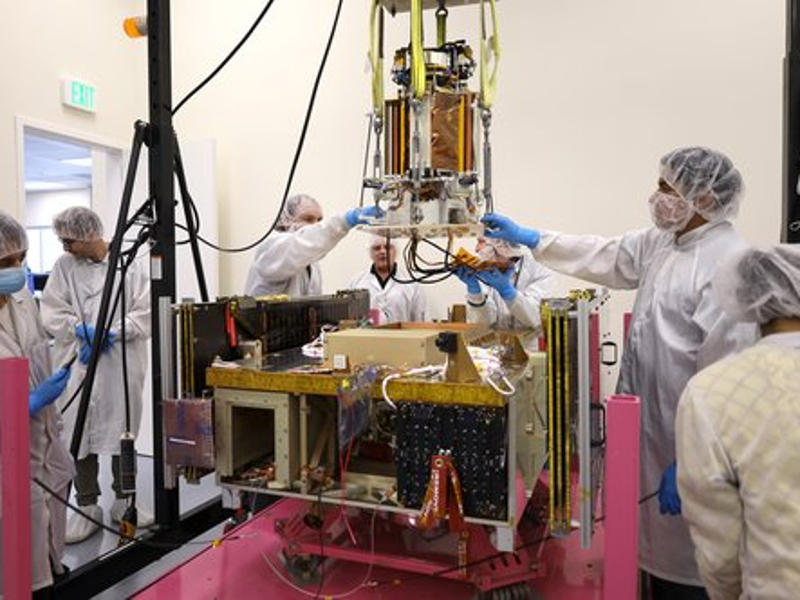The DOLCE portion of the Space Solar Power Demonstrator being loaded onto the Vigoride spacecraft. Image: Caltech/Space Solar Power Project
The Caltech Space Solar Power Project has launched into orbit a prototype to demonstrate several of the key components for harvesting solar power in space.
The launch, which took place on January 2 on a Momentus Vigoride satellite aboard a SpaceX rocket on the Transporter-6 rideshare mission, marks a major step forward both for the project, which was started a decade ago back in 2013, and for space-based solar power in general.
The 50kg demonstrator is aimed to test three key technologies, named DOLCE, ALBA and MAPLE.
DOLCE, the Deployable on-Orbit ultraLight Composite Experiment, is a structure measuring approximately 1.8m square that demonstrates the architecture, packaging scheme and deployment mechanisms of a modular solar spacecraft.
ALBA is a collection of 22 different types of PV cells to enable an assessment of the types of cells that are the most effective in the space environment.
MAPLE, the Microwave Array for Power-transfer Low-orbit Experiment, is an array of flexible lightweight microwave power transmitters with precise timing control focusing the power selectively on two different receivers to demonstrate wireless power transmission at distance in space.
An additional fourth component is a box of electronics that interfaces with the Vigoride computer and controls the three experiments.
“For many years, I’ve dreamed about how space-based solar power could solve some of humanity’s most urgent challenges,” says Donald Bren, chairman of the real estate Irvine Company, who initiated and has funded the project with an initial $100 million on a philanthropic basis.
“Today, I’m thrilled to be supporting Caltech’s brilliant scientists as they race to make that dream a reality.”
Space solar power demonstration
The scientists expect to start running their experiments on the demonstrator within a few weeks of the launch, while a full assessment of its performance should be available within a few months.
Some will be conducted quickly and for example the deployment of DOLCE could be commanded within days of obtaining access to the demonstrator from Momentus.
Other elements will require more time. The collection of photovoltaics will need up to six months of testing to give new insights into what types of technology will be best for this application.
MAPLE involves a series of experiments, from an initial function verification to an evaluation of the performance of the system under different environments over time.
Meanwhile, two cameras on deployable booms mounted on DOLCE and additional cameras on the electronics box will monitor the experiment’s progress and stream a feed back down to Earth.
Ali Hajimiri, professor of electrical engineering and medical engineering and project co-director, commented that no matter what happens, the prototype is a major step forward.
“It works here on Earth and has passed the rigorous steps required of anything launched into space. There are still many risks, but … we believe the space experiments will provide us with plenty of additional useful information that will guide the project as we continue to move forward.”
The project’s eventual goal is a kilometre-scale constellation of modular spacecraft that collect sunlight and transmit the energy to wherever it is needed, including places that currently have no access to reliable power.
Success or failure from the three testbeds will be measured in a variety of ways, the project team has reported. The most important test for DOLCE is that the structure completely deploys from its folded-up configuration into its open configuration.
For ALBA, a successful test will provide an assessment of which PV cells operate with maximum efficiency and resiliency. MAPLE’s goal is to demonstrate selective free-space power transmission to different specific targets on demand.
